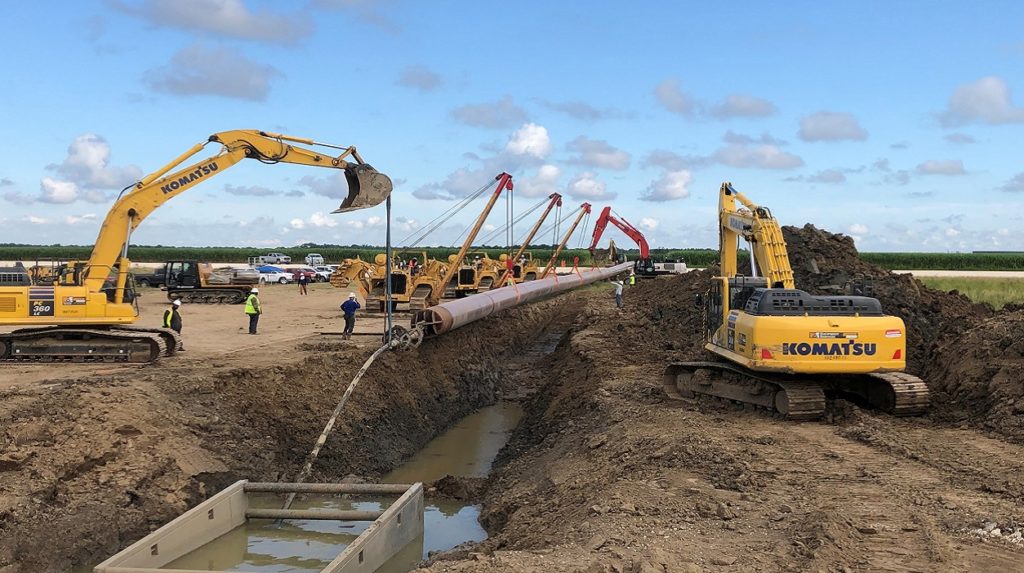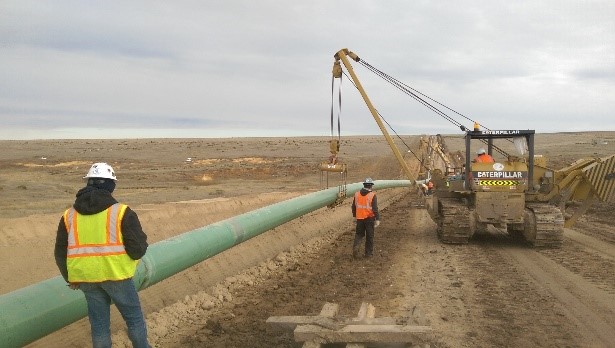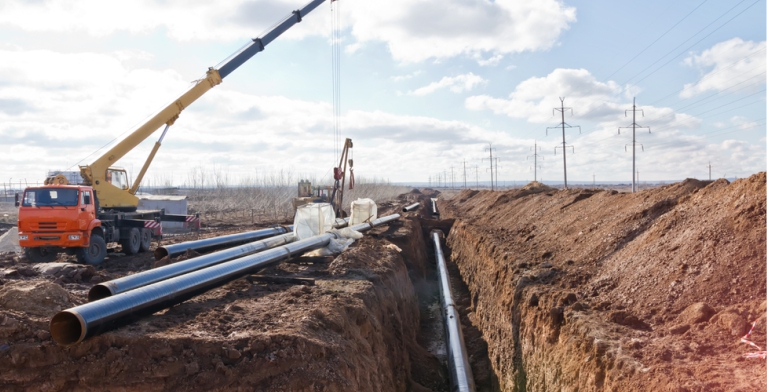Improve Flow Rates With Strategic Creek Pipe pipeline construction Methods
Recognizing the Fundamentals of Pipes Installation: What You Required to Know About the Refine
Proper pipe installation is necessary for any type of plumbing system. It requires careful consideration of numerous elements, including material selection and adherence to local policies. A well-planned design can protect against problems like stress loss, while the right devices assure reliable signing up with techniques. However, also experienced installers can make usual blunders. Understanding these essentials can bring about a more reliable and sturdy system, motivating a more detailed look at the crucial elements entailed in the process.
Selecting the Right Products for Pipe Installation
When considering pipe installation, the option of appropriate materials is necessary to making sure durability and functionality. Different products are offered, each offering special benefits and factors to consider. PVC pipes are light-weight, immune to corrosion, and cost-efficient, making them ideal for property plumbing. Alternatively, copper pipes, recognized for their longevity and capacity to stand up to high temperature levels, are typically liked for home heating systems.Additionally, galvanized steel pipes offer toughness and toughness, suitable for sturdy applications, although they are prone to corrosion over time.For underground setups, polyethylene pipelines are favored because of their adaptability and resistance to tension cracking. Appropriate product selection depends upon the particular requirements of the job, consisting of stress ratings, temperature variations, and the chemical nature of the fluids being carried - Creek Pipe near me. Inevitably, educated selections regarding pipe materials contribute significantly to the total success and longevity of pipes systems
Understanding Local Building Ordinance and Rules
Just how can recognizing local building ordinance and guidelines impact pipe installation? Familiarity with these codes is crucial for making sure that pipe installments are safe, certified, and reliable. Regional structure codes outline certain needs relating to products, installation techniques, and security actions, which should be followed to avoid prospective legal issues and costly fines.Failure to conform can cause assessments being failed, delays in task conclusion, and even mandated removal of improperly mounted pipes. Additionally, understanding zoning laws and policies can affect the kind of materials allowed, in addition to the techniques utilized for installation.Contractors and home owners alike ought to spend time in evaluating neighborhood laws before starting any kind of installation project. This aggressive approach not only advertises safety and security but likewise improves the overall top quality and toughness of the pipes system, ultimately fostering lasting capability and satisfaction.
Preparation Your Pipe Design and Design
Appropriate planning of pipe layout and style is essential for accomplishing a reliable plumbing system. This procedure begins with evaluating the certain demands of the space, considering the location of fixtures and appliances. Precise dimensions assure that pipelines are correctly transmitted, reducing bends and transforms that can bring about pressure loss.Consideration of the flow prices and the kinds of products utilized is vital, as different products have differing sturdiness and compatibility with pipes systems. In addition, the developer must make up future expansions or modifications to the layout, allowing for versatility in instance of renovations.Efficient water drainage and air flow are likewise substantial parts of the layout, as they protect against clogs and ensure appropriate waste removal. Finally, collaboration with local building ordinance ensures conformity and security, which is paramount in any pipes installation job.
Crucial Devices and Equipment for Installation
Effective pipe installation depends upon having the right devices and devices available. Vital devices consist of pipe cutters for tidy cuts, wrenches for tightening installations, and pliers for gripping and turning pipelines. Additionally, a level warranties pipelines are installed uniformly, while a measuring tape aids in attaining precise lengths.For details products, a soldering iron may be essential for copper pipes, while a PVC cutter is vital for plastic options. Safety and security devices, such as handwear covers and goggles, protects installers from prospective hazards during the process.A pipe bender can be specifically useful for developing smooth contours without jeopardizing honesty, while a torque wrench assurances that links are secured to the maker's specifications.Having these tools readily offered not just assists in a smoother installation procedure but likewise adds to the overall durability and performance of the pipes system. Correct tools is essential in accomplishing long-lasting results.
Techniques for Appropriate Pipe Signing Up With and Securing
Achieving a safe and leak-free connection in between pipelines calls for cautious focus to joining and sealing techniques. Numerous approaches exist, each suited to different pipe materials and applications (Creek Pipe pipeline construction). For instance, welding is typically utilized for metal pipelines, ensuring robust connections through warmth combination. On the other hand, plastic pipelines take advantage of solvent concrete or fusion welding, creating solid, long-term bonds.Threaded connections prevail in both metal and plastic piping, requiring accurate alignment and making use of ideal sealants, such as Teflon tape or pipe dope, to stop leaks. Compression installations use an additional choice, where mechanical pressure safeguards the pipelines with each other, making them quickly took apart for maintenance.Regardless of the method picked, appropriate prep work is necessary. This includes cleansing pipe ends and ensuring they are totally free from particles. Executing these methods carefully will improve the long life and dependability of the pipe system, eventually adding to its effective efficiency
Typical Mistakes to Prevent Throughout Installation
During pipe installation, preventing common blunders is necessary for making sure a reputable and efficient system. One regular mistake is falling short to determine and pop over to this web-site reduce pipes precisely, which can bring about inappropriate fittings and leaks. In addition, disregarding to inspect the compatibility of materials can result in deterioration or various other damage over time. Poorly securing joints and connections can also create powerlessness in the system, creating possible failures.Another typical mistake is neglecting the significance of incline and water drainage; pipes should be set up at the correct angle to assist in correct circulation. Poor support for pipelines can lead to drooping and stress and anxiety, affecting the stability of the system. Eventually, overlooking local codes and policies can lead to expensive rework and security risks. By recognizing these risks, installers can greatly boost the sturdiness and efficiency of pipe systems.
Upkeep Tips for Resilient Pipe Equipments
To guarantee the long life of pipe systems, routine evaluations and cleansing are essential techniques. These actions aid recognize prospective concerns prior to they rise into significant problems. In addition, utilizing proper insulation strategies can even more safeguard pipes from temperature level fluctuations and ecological elements.
Regular Examinations and Cleaning Up
Normal evaluations and cleaning are essential for preserving the long life and performance of pipe systems. Routinely checking out pipes for signs of deterioration, leaks, or clogs can aid recognize potential concerns prior to they escalate into expensive fixings. Cleaning pipelines periodically eliminates build-up that can restrict flow and advertise deterioration. It is a good idea to set up examinations a minimum of annually, yet much more regular checks may be needed in high-usage environments. Utilizing expert solutions for comprehensive cleaning warranties that all debris is efficiently removed. Furthermore, maintaining documents of evaluations and maintenance activities aids in tracking the system's health and wellness gradually - Creek Pipe roustabout. By focusing on these methods, homeowner can boost the dependability and lifespan of their pipe systems
Proper Insulation Techniques
Reliable insulation strategies play a crucial role in maintaining the performance and durability of pipe systems. Proper insulation decreases warm loss in warm water pipelines and avoids cold in cool water pipelines, significantly lowering energy prices and potential damage. Usual materials made use of for insulation consist of fiberglass, foam, and rubber, each offering differing levels of thermal resistance. It is vital to assure that insulation is used consistently, covering all exposed locations without gaps. Furthermore, safeguarding insulation with suitable fasteners aids maintain its position and efficiency over time. Routine evaluations ought to be performed to determine damage, ensuring prompt substitutes. By applying these techniques, pipe systems can operate effectively and have a prolonged life span, inevitably benefiting both the setting and the property owner.

Often Asked Concerns
Just how Do I Figure Out the Appropriate Pipe Dimension for My Task?
Determining the proper pipe dimension entails evaluating the job's flow demands, stress requirements, and the kind of fluid being carried. Consulting design criteria and performing calculations guarantees optimal efficiency and performance in the installation procedure.
What Are the Ecological Effects of Various Pipe Products?

Can I Set Up Pipes Myself or Should I Hire a Professional?
The inquiry of whether to set up pipelines individually or employ a professional frequently depends on the individual's ability degree and project intricacy. A specialist might guarantee conformity with guidelines and decrease potential lasting problems.

Exactly How Long Can I Anticipate My Pipe Installation to Last?
The durability of pipe installation differs significantly, normally lasting 20 to 100 years, depending on products, installation top quality, and upkeep. Regular inspections and correct care can improve longevity and stop premature failures.

What Are the Indicators of a Failing Pipe System?
Indicators of a falling short pipe system include constant leaks, unusual water pressure adjustments, discolored water, mold and mildew growth, and relentless dampness. House owners ought to check these indicators to prevent costly i loved this damages and assurance prompt repairs are made.